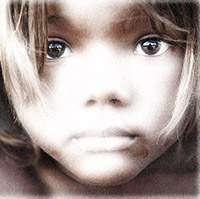 Themes from Nyland #7
Themes from Nyland #7
The team from the Guardian’s office have analysed the 850 pages and 260 recommendations from The life they deserve: Child Protection Systems Royal Commission Report[1]. We have extracted some themes and priorities to allow us to critique the government’s response, judge the improvements over time and to shape our own work. Following is a description of the issues and a short list of things to watch for in the reform process. The first six in the series are available.[2] We will post the rest over the next few weeks. [3]
Aboriginal children[4] are disproportionately represented in the care system. They comprise about one third, and the trend points to further increases. As well as the trauma and dislocation felt by all children coming into care, they face the extra risk of removal from,or loss of access to, their culture, language and community.
Greater effort is needed on specific issues for Aboriginal families both in helping them to care safely for children, and helping Aboriginal children in care retain or develop connections to their community and culture.
Children from remote communities who come into care with limited access to local foster care and no residential care are faced with the prospect of removal to a regional centre or even the metropolitan area with a resultant severing of family, cultural and language connections. One response has been increasingly to place children with kinship carers but Commissioner Nyland pointed out that the administration of kinship care for all children, itself has serious problems. (See the post on home-based care for her critique of current kinship care arrangements.)
Placing Aboriginal children in culturally appropriate environments has not proven easy.
The Agency continues to be challenged by its ability to comply with the Aboriginal and Torres Strait Islander Placement Principle (ATSICPP). In some cases suitable Aboriginal carers are not located for children until well after their placement into care.
Commissioner Nyland recommends the setting up of a family scoping unit to collect and coordinate information to quickly identify safe and appropriate placements.
Commissioner Nyland also stresses the importance of building genuine partnerships with Aboriginal-led organisations.
The Agency has not always embraced this obligation. It needs renewed focus on consulting with prescribed agencies as required by the Children’s Protection Act.
Even so, not all Aboriginal children will be able to be placed with Aboriginal carers.
Better support for non-Aboriginal carers should include help in attending to the cultural needs of Aboriginal children in their care.
Commissioner Nyland notes that agency collaboration has not been a strong feature of work with Aboriginal families and children.
…new agencies [ engaged in early intervention should] take advantage of referral pathways from existing credible services, especially those that are led by the health sector and those that have contact with Aboriginal parents in the prenatal period.
A working group should be established to promote collaborative practice between the South Australian, Western Australian and Northern Territory child protection agencies in the tri-border region including working towards an across-border legislative scheme for child protection in the three jurisdictions.
As reform progresses we look forward to seeing:[5]
- Consultation and engagement with remote communities and other Aboriginal bodies at the start of, and continuing through, the reform of Aboriginal child protection.
- An overhaul of the conduct of kinship care (as described in the post on home-based care.)
- A strengthening of the training, support, resourcing and supervision of staff to better work with, and support, the culture of Aboriginal children in all forms of out-of-home care.
- The provision of foster care or residential care placements in locations close to the APY Lands.
- Increase in the recruitment and retention of Aboriginal workers in the child protection workforce.
- Adoption of a culturally appropriate tool to assess foster and kinship carers in remote and other communities.
- Review of remuneration, work conditions and support arrangements to secure core permanent child protection workers in the APY Lands.
- A working group established to promote collaborative practice between the South Australian, Western Australian and Northern Territory child protection agencies in the tri-border region.
- Renewed focus on the ATSICPP as the basis for culturally appropriate placement of Aboriginal children in state care.
Please join the discussion via the reply box leaving a name and an email address in the spaces provided. We will remove them from the published post if you request in your reply.
[1] Unless otherwise noted all quotes are from The life they deserve: Child Protection Systems Royal Commission Report,
[2] See also posts on Coordination and Collaboration, The voice of the child , Emergency care , Residential care, Home-based care and Therapeutic care – everywhere.
[3] This is not intended to be a précis of Commissioner Nyland’s report which provides a very clear and readable summary. Because of the Guardian’s mandate, this analysis will tend to focus on issues for children in out-of-home-care.
4 We follow the same convention as Commissioner Nyland’s report in this post, using the term Aboriginal to include both Aboriginal and Torres Strait Islander people.
5 The Aboriginal community is currently considering its response to the Nyland Commission recommendations and we look forward to reviewing our position in the light of that response.
